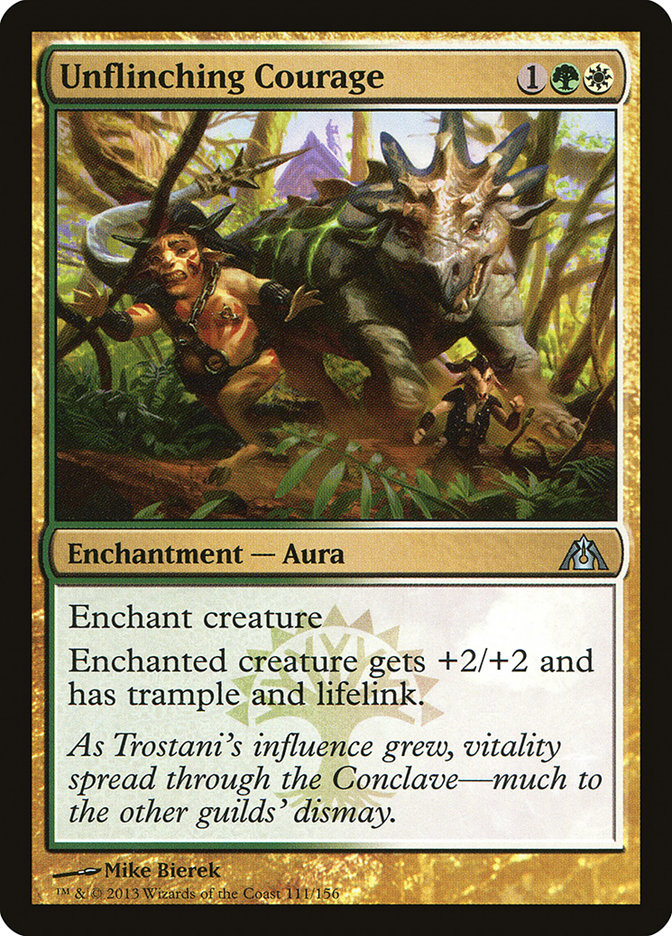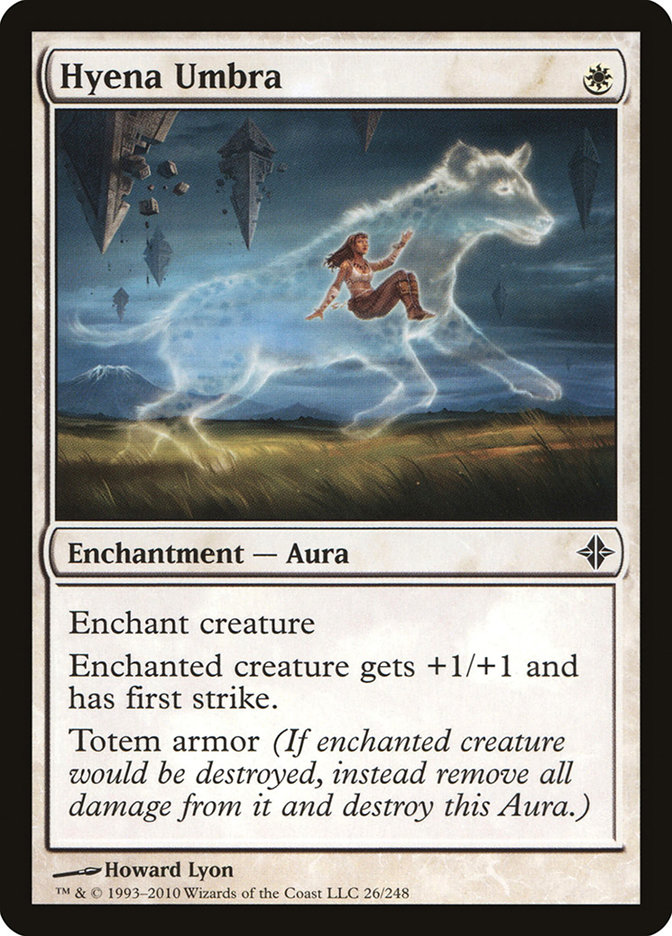I’ve begun to notice a funny thing about Modern. In the grand scheme of things, Modern as a format is still in its infancy, and as such it can be difficult to understand. The best that I’ve been able to do personally is to compare Modern to the other widely played non-rotating format in Magic, which is Legacy.
Legacy has such a deep and powerful card pool that a competitive deck can be built for nearly any strategy imaginable. While small formats like Standard are primarily driven by new cards coming in and old cards rotating out (or sometimes being banned), Legacy is primarily driven by the players. The results of last week’s tournament define what Legacy will be next week. If one could somehow wipe the slate clean—let’s say introduce Legacy for the first time to some parallel Magic community in a parallel universe with similar talent and experience to us on Earth—there would be no telling how long it would take—or if it would ever happen at all—for the format to develop into what it is today.
The funny thing about Modern is that despite a lower power level and a smaller card pool, it seems to be a format driven by players more than by cards. In my preparation for the Modern portion of the World Championship, the first thing I did was to make a list of Modern decks that have been successful in the past but are not seeing much play right now: U/W Tron, R/G Tron, RUG Delver, U/W/R Delver, Faeries, Loam—and that’s just to name a few!
The thing is that for many of these decks there is no good reason at all why they couldn’t be competitive right now. In some cases, they were abandoned for a particular reason, like a bad matchup or a backlash in sideboarding that has since faded away. In other cases, a deck was the flavor of the week but was quickly dropped once it was no longer cool. The point is that interest in a deck breeds more interest and lack of interest breeds a bigger lack of interest. Nobody plays a deck that nobody else is playing.
Hence my search for a Modern deck led me to G/W Auras, also known as "Hexproof" and "Bogles." I remembered this deck as somewhat of a boogeyman during the Modern PTQ season six months ago. Even at a time when Storm and Jund were at their full power, G/W Auras was a deck that could plow through a field unless people were packing dedicated sideboard hate like Back to Nature. In my mind, nothing had changed for G/W Auras, but for one reason or another it was now off the radar, people were skimping on sideboard hate, and it had good matchups against the most popular decks in Modern.
Creatures (12)
Lands (21)
Spells (27)

It was this thought process that piqued my interest in G/W Auras, but it was the way the deck played that caused me to fall in love. The game plan is fast, simple, and reliable. The mana is excellent, and you rarely get screwed or flooded. In the absence of hate cards, you will beat any "fair" strategy, so your sideboard can be dedicated to extremely potent hate cards for the matchups where you need them rather than having to cover all of your bases with marginal upgrades for your answer cards as decks like U/W/R and Jund typically must do.
At this particular moment in Modern, here is my short list of the most important decks to beat. The exact order could be debated, but I believe that it’s a fair starting point.
1. Birthing Pod: Game 1 is 50/50 with G/W Auras. The nice thing is that unlike other decks G/W can never ever lose to Pod’s creature beatdown plan, which means they’re forced to combo. In game 1, this is a real possibility if the Pod player has the right kind of hand, but after sideboard they’re forced down a path where they can be blown out by a removal spell or a hate card like Suppression Field.
2. U/W/R: A great matchup for G/W Auras and a real reason to play the deck. In the absence of hate cards, the Restoration Angel version of U/W/R is a good matchup, and in the absence of hate cards, the creatureless control build of U/W/R can basically never beat you.
3. Scapeshift: Squarely favorable for G/W Auras. You put pressure on so quickly that the Scapeshift player will struggle to progress their own game plan while frantically trying to defend themself. The lifelink enchantments frequently leave you above eighteen life, meaning they’ll need more than seven lands to kill you, and that extra turn makes a world of difference. After sideboard you even get Leyline of Sanctity as an extra layer of defense.
4. Jund / Junk / G/B: Again, game 1 is close to 50/50 since Liliana of the Veil is excellent against hexproof creatures. However, when she doesn’t show up, ordinary creatures have very little chance of beating a souped-up Bogle. After sideboard Leyline of Sanctity is an absolute powerhouse, stopping both Liliana and discard spells. Rest in Peace and Suppression Field can be quite good as well.
So among the Top 4 Modern decks, a G/W Auras player has nothing to fear. You may have also noticed a surprising trend from my description of the matchups. Unlike most powerful, linear decks, G/W Auras actually has a tendency to improve after sideboarding rather than being strictly a game 1 deck.
G/W Auras at the World Championship
For those of you unfamiliar with the World Championship, the tournament has a unique structure. After twelve rounds of mixed-format Swiss, there is a cut to a Top 4, where the players use their Modern decks in best three out of five matches. That means as many as four sideboarded games!
The consequence of this is that players are less likely to choose a Modern deck that struggles in sideboarded games. After all, who would want to go 9-0 across Draft and Standard, only to have their Affinity deck Stony Silenced out in the semifinals? In my opinion, G/W Auras actually does not fall into this category. However, a secondary consequence of the 3/5 structure is that players will also be less extreme in preparing for these kinds of decks. (If you don’t believe me, scroll through the World Championship Modern decklists. How much dedicated Affinity hate do you see? How much graveyard hate?
So I had to worry less about decks like Affinity, Urzatron, and Living End. While the first two are scary but winnable matchups, Living End is quite a nightmare, so it made me happy to think that it would likely not show up at this tournament. Finally, it was my opinion that anyone who hadn’t stopped to seriously consider G/W Auras for their own deck choice would lump it in with these other linear decks that become worse after sideboarding, and consequently they would underprepare for the matchup.
The Decklist
Now that I’ve explained what drew me to G/W Auras and why you might consider it for your own future Modern tournaments, let me get into the individual card choices.
I said earlier that "nothing has changed for G/W Auras" since its heyday, but that’s not entirely true. Since the deck’s initial success, it’s actually gained a huge card in Unflinching Courage.
I can describe the game plan of G/W Auras in three steps.
Step 1: Make a big creature.
Step 2: Give your big creature lifelink.
Step 3: Make sure your big creature can’t be chump blocked.
Unflinching Courage, while a little on the expensive side for this deck, completes all three steps at once! Previous builds had to play an awkward mix of Spirit Mantle and Spirit Link in order to cobble things together, but I’ve found things run much more consistently now with Unflinching Courage.
In fact, alongside Ethereal Armor and Daybreak Coronet, Unflinching Courage is one of the most powerful Auras in the deck. Ethereal Armor is simply an incredible rate in terms of mana to damage and makes for some powerful nut draws. (Remember that it counts Leyline of Sanctity, Rest in Peace, Stony Silence, and Suppression Field as well as your Auras!) Daybreak Coronet is the best card for completing steps one and two, and you really want to draw it in every game. Just be careful, as Daybreak Coronet will "fall off" a creature at any time if it’s the only Aura enchanting it.
Unflinching Courage and Daybreak Coronet earn their spots on raw power, but beyond that I’ve found it very important for all of the other Auras in the deck to cost one mana. This makes Kor Spiritdancer and Daybreak Coronet more powerful and reliable; it allows you to keep one- and two-land hands; and it simply makes the deck quicker, smoother, and more efficient.
Ethereal Armor has already been mentioned, and Rancor is a pretty obvious one. Be aware that it interacts negatively with Rest in Peace, although it’s the only graveyard-related ability in the deck.
When I first started with this archetype, I copied a decklist that had Keen Sense, and I have to admit that I was skeptical. Curiosity is not a powerful card, and why would such a fast and narrow deck even care about drawing cards? The fact is that I was dead wrong and Keen Sense is excellent. Drawing cards is good in G/W Auras since you frequently need to mulligan low on cards and want to continue pumping up your creature in order to pressure your opponent and keep pace with whatever they’re doing. Keen Sense is one of the best turn 2 plays available.
Finally, I included all eight of the one-mana Umbras: Hyena Umbra and Spider Umbra. This is not completely necessary, and I could envision a metagame where I would play some number of Spirit Links instead. (The actual card Spirit Link offers "double lifelink" since Spirit Link gives the creature a triggered ability that goes above and beyond the keyword "lifelink"). However, as things stand and particularly for the Worlds metagame, I felt that the Umbras were the next best one-mana Auras available.
One of the most common ways to interact with hexproof creatures is Supreme Verdict and similar effects, and Umbras shut that strategy down in its tracks. It’s also great any time an opponent taps out and you can drop a Kor Spiritdancer and immediately hook it up with an Umbra.
Kor Spiritdancer is the final card I’ll mention, and man is it a doozy. While some builds forgo the powerful Spiritdancer to have one more hexproof guy in Silhana Ledgewalker, I’ve found the Spiritdancer to be very important in matchups like Birthing Pod and Affinity. Against such decks you aren’t answering one another’s threats but are just throwing haymakers, and it’s impossible to keep up with the Spiritdancer.
Even in removal-heavy matchups where Spiritdancer is at its worst, it’s still very passable. If I know anything about Constructed Magic, it’s to play with powerful cards; sometimes they just don’t have the Terminate! Even if they do, you can cast the Dancer and play an Aura immediately without passing priority to ensure that you get at least a little value.
A Note on the Rules
Imagine you have a Kor Spiritdancer with Rancor, Spider Umbra, Daybreak Coronet, and Ethereal Armor enchanting it. Imagine you have a Leyline of Sanctity and a Rest in Peace in play. Imagine I, your opponent, have Elesh Norn, Grand Cenobite and Night of Soul’s Betrayal in play. I point to your Kor Spiritdancer and say, "How big is this guy?"
Now, one could make arguments about sportsmanship, or friendliness, or a number of other things when it comes to this situation. However, the rules of Magic do not require you to answer my question here. You cannot lie and if I make an incorrect statement like "the Spiritdancer is a 10/10" you cannot allow the confusion to continue, but you absolutely do not have to count the creature’s power and toughness for me.
My personal opinion is that as long as the game state is clear and everyone has fair access to all information, people can be allowed to make mistakes. Mistakes are part of Magic, and being able to navigate a complex game state is a skill that players work hard to cultivate. I don’t think anyone should feel obligated to hold their opponent’s hand, and one could even argue that it’s poor strategy not to give your opponent every chance to make a mistake. The other thing to consider is that you yourself may have miscounted and you can get in serious trouble if you choose to answer your opponent’s question and say the wrong thing!
When my opponent asks me "how big is your guy?" sometimes I respond by saying something like "I’d rather not answer that." If they make a statement about my creature’s power and toughness, sometimes I’ll respond with "you should ask a judge about that." However, this is also a touchy subject, and there are two sides of the coin; I would also never fault someone for answering their opponent’s question. Indeed, if I’m playing against someone I know or am just in a particularly friendly mood, sometimes I do answer questions like these.
You should always behave in what you feel is a sportsmanlike way, but my whole point is that I don’t believe it’s necessarily unsportsmanlike to give your opponent a chance to make a mistake as long as you aren’t doing something malicious to trick them. It is unsportsmanlike to play with Sanskrit Kor Spiritdancers because you’re hoping that your opponents will forget part of the ability. It is unsportsmanlike to stack your enchantments in a way that they aren’t easily visible at all times. It is cheating to lie about how big a creature is, or to allow a life total discrepancy to persist, or to let your opponent bury a creature that wasn’t supposed to die, etc.
So by all means, be a cutthroat competitor, but be fair, be respectful, and remember to have fun!





